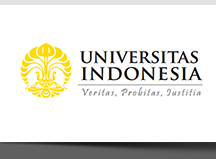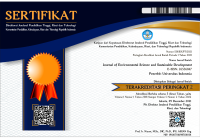Author ORCID Identifier
https://orcid.org/0009-0006-5420-0253
Article Classification
Environmental Science
Abstract
Supported by a variety of diversity and landscapes, the development of tourism in the Petungkriyono area is growing rapidly. Optimizing ecotourism services in the Petungkriyono forest without disrupting the ecosystem and damaging the environment can be done by limiting the number of visitors at tourism sites. This study aims to find out information about the tourism capacity of some tourist attractions in the local forest. This study uses the Cifuentes model to predict the maximum number of visitor capacities that can be accommodated in a tourist attraction called Physical Carrying Capacity (PCC), Real Carrying Capacity (RCC), and Effective Carrying Capacity (ECC) with management capacity as a consideration. The results of the study show that from PCC calculations, which means a maximum number of visitors physically provided by the space, Curug Bajing has the highest number of visitors (1,365 people) in a day from four other tourist objects. Rogojembangan Coffee Shop has the fewest visitors (347 respondents). The highest number of RCC calculations is Curug Bajing tourist attraction (1,365 respondents), and the lowest is Rogojembangan Coffee Shop (346 respondents). In addition, ECC calculations show that the highest number of visitors is at Curug Bajing (1,364 respondents), and the lowest is at the Rogojembangan Coffee Shop (345 respondents). For the management of tourism, the results can provide insight into which tourist attractions require further development. Regarding the result, it shows that Curug Lawe tourist attraction has an exceeded carrying capacity, so our results provide a basis for local tourism management and stakeholders to develop more effective strategies in tourism in the local forest, such as controlling and managing the tourism area by limiting visitors, managing the facilities, waste management, and avoid the habitat of endemic fauna so that we can maintain forest sustainability while utilizing natural tourism in the Petungkriyono forest.
References
Austin, K. G., Schwantes, A., Gu, Y., & Kasibhatla, P. S. (2018). What causes deforestation in Indonesia? Environmental Research Letters, 14(2),024007. https://doi.org/10.1088/1748-9326/aaf6db
Asquith, N. M. (2001). Misdirections in conservation biology. Conservation Biology, 15(2), 345–352. https://doi.org/10.1046/j.1523-1739.2001.015002345.x
Bertocchi, D., Camatti, N., Giove, S., and Borg, J.V. (2020). Venice and Overtourism: Simulating Sustainable Development Scenarios through a Tourism Carrying Capacity Model. Sustainability 12, no. 2: 512. https://doi.org/10.3390/su12020512
BKSDA of Indonesian MEFor. (2019). Report on Identification of Prospective Locations for the Candidate of EEA Petungkriyono in Pekalongan forest District. BKSDA; Central Java.
Cifuentes, Miguel a., Izureta, Arturo V., de Faria, Herlder Henrique. (2000). Measuring Protected Areas Management Effectiveness. WWF Technical Series No.2. CATIE Turrialbam Costa Rica. https://portals.iucn.org/library/efiles/documents/2000-131.pdf
García-Frapolli, E., Ayala-Orozco, B., Bonilla-Moheno, M., Espadas-Manrique, C., & Ramos-Fernández, G. (2007). Biodiversity conservation, traditional agriculture and ecotourism: Land cover/land use change projections for a natural protected area in the northeastern Yucatan Peninsula, Mexico. Landscape and Urban Planning, 83(2–3), 137–153. https://doi.org/10.1016/j.landurbplan.2007.03.007
Kobayashi, H., Song, C., Ikei, H., Park, B., Kagawa, T., & Miyazaki, Y. (2019). Combined effect of walking and forest environment on salivary cortisol concentration. Frontiers in Public Health, 7. https://doi.org/10.3389/fpubh.2019.00376
Korcz, N., Ciesielski, M., Kamińska, A., Choromański, K., Gotlib, D., Stefán, F., & Taczanowska, K. (2024). The use of digital tools in forest tourism and recreation - experiences from Warsaw agglomeration in Poland. Trees Forests and People, 100697. https://doi.org/10.1016/j.tfp.2024.100697
Li, J., Weng, G., Pan, Y., Li, C., & Wang, N. (2021). A scientometric review of tourism carrying capacity research: Cooperation, hotspots, and prospect. Journal of Cleaner Production, 325, 129278. https://doi.org/10.1016/j.jclepro.2021.129278
Lusiani., Wally Sumarno. (2020). Pengaruh Temperatur Udara dan Curah Hujan Terhadap Banyaknya Pengunjung Objek Wisata di Pantai Teluk Penyu Cilacap. In Prosiding Vol 2 No 1 (2020); National Seminar on Maritime and Interdiciplinary Studies 2: 16-22. https://123dok.com/document/yen30mey-pengaruh-temperatur-terhadap-banyaknya-pengunjung-wisata-pantai-cilacap.html
Manalu, D. O., Kusumawati, Y. A., & Tho, C. (2023). Developing Nusantara Mobile Application to support local tourism in Indonesia. Procedia Computer Science, 227, 641–650. https://doi.org/10.1016/j.procs.2023.10.568
Mäntymaa, E., Tyrväinen, L., Juutinen, A., & Kurttila, M. (2019). Importance of forest landscape quality for companies operating in nature tourism areas. Land Use Policy, 107, 104095. https://doi.org/10.1016/j.landusepol.2019.104095
Mihardja, E. J., Alisjahbana, S., Agustini, P. M., Sari, D. a. P., & Pardede, T. (2023). Forest wellness tourism destination branding for supporting disaster mitigation: A case of Batur UNESCO Global Geopark, Bali. International Journal of Geoheritage and Parks, 11(1), 169–181. https://doi.org/10.1016/j.ijgeop.2023.01.003
Muta’ali, Luthfi. (2012). Daya Dukung Lingkungan untuk Perencanaan Pengembangan Wilayah. ISBN:9789798786372 Faculty of Geography, Universitas Gadjah Mada. Yogyakarta, Indonesia. https://perpustakaan.big.go.id/index.php?p=show_detail&id=585&keywords=
Pan, S., Gao, M., Kim, H., Shah, K. J., Pei, S., & Chiang, P. (2018). Advances and challenges in sustainable tourism toward a green economy. The Science of the Total Environment, 635, 452–469. https://doi.org/10.1016/j.scitotenv.2018.04.134
Pásková, M., Wall, G., Zejda, D., & Zelenka, J. (2021). Tourism carrying capacity reconceptualization: Modelling and management of destinations. Journal of Destination Marketing & Management, 21, 100638. https://doi.org/10.1016/j.jdmm.2021.100638
Pichlerová, M., Výbošťok, J., Önkal, D., Lamatungga, K. E., Tamatam, D., Marcineková, L., & Pichler, V. (2023). Increased appreciation of forests and their restorative effects during the COVID-19 pandemic. AMBIO, 52(3), 647–664. https://doi.org/10.1007/s13280-022-01816-x
Pratiwi, D., Yuwati, T. W., Lestari, S., Indrajaya, Y., & Dewi, A. E. (2023). Biodiversity in Lower Montane Forest of Petungkriyono: a review. BIO Web of Conferences, 80, 03002. https://doi.org/10.1051/bioconf/20238003002
Purwanto., Latifah. S., Yonariza., Akhsani, F., Sofiana, E.I., Ferdiansah, M.R. (2023). Land cover change assessment using random forest and CA markov from remote sensing images in the protected forest of South Malang, Indonesia. Remote Sensing Applications: Society and Environment, 32(101061). https://doi.org/10.1016/j.rsase.2023.101061.
R. Samal and M. Dash. (2022). Ecotourism, biodiversity conservation, and local livelihoods: Understanding the convergence and divergence. International Journal of Geoheritage and Parks. https://doi.org/10.1016/j.ijgeop.2022.11.001
Sayan, Selçuk & Atik, Meryem. (2011). Recreation Carrying Capacity Estimates for Protected Areas: A Study of Termessos National Park. Ekoloji. 20. 66-74. 10.5053/ekoloji.2011.7811.https://www.researchgate.net/publication/275377898_Recreation_Carrying_Capacity_Estimates_for_Protected_Areas_A_Study_of_Termessos_National_Park
Sgroi, F. (2020). Forest resources and sustainable tourism, a combination for the resilience of the landscape and development of mountain areas. The Science of the Total Environment, 736, 139539. https://doi.org/10.1016/j.scitotenv.2020.139539
Suhardono, S., Fitria, L., Suryawan, I. W. K., Septiariva, I. Y., Mulyana, R., Sari, M. M., Ulhasanah, N., & Prayogo, W. (2024). Human activities and forest fires in Indonesia: An analysis of the Bromo incident and implications for conservation tourism. Trees Forests and People, 15, 100509. https://doi.org/10.1016/j.tfp.2024.100509
Sumanapala, D., & Wolf, I. D. (2020). Man-Made impacts on emerging geoparks in the Asian region. Geoheritage, 12(3). https://doi.org/10.1007/s12371-020-00493-0
Suwarto, T. (2011). Pengaruh Iklim dan Perubahannya Terhadap Destinasi Pariwisata Pantai Pangandaran. Journal of Regional and City Planning, 22(1), 17. https://doi.org/10.5614/jpwk.2011.22.1.2
Tan, Q. (2023). Research on sustainable carrying capacity of urban tourism environment based on multi objective optimization algorithm. Results in Engineering, 19, 101344. https://doi.org/10.1016/j.rineng.2023.101344
Wang, J., Huang, X., Gong, Z., & Cao, K. (2019). Dynamic assessment of tourism carrying capacity and its impacts on tourism economic growth in urban tourism destinations in China. Journal of Destination Marketing & Management, 15, 100383. https://doi.org/10.1016/j.jdmm.2019.100383
Yaghsyah, I.A., Husodo, T., Megantara, E.N., Wulandari, I., Atsaury, C.I.A., Febrianto, P. (2022). Home range and habitat vegetation Javan gibbon (Hylobates moloch) in Culug Walet. Cisokan, West Jawa, Indonesia. Prosiding Seminar Nasional Masyarakat Biodiversity Indonesia. Vol 8(1), 39-45. ISSN: 2407-8050. https://doi.org/10.13057/psnmbi/m080106
Zhang, D.M.; Peng, S.Z.; Zhao, W.J.; Gao, M.Y.; Han, J.Q. (2019). Evaluation of ecological environment quality of typical forest parks. Agricultural Biotechnology (2164-4993), 2019, Vol 8, Issue 5, p112. https://www.proquest.com/scholarly-journals/evaluation-ecological-environment-quality-typical/docview/2301923030/se-2
Zhang, L., Wu, C., & Hao, Y. (2022). Effect of the development level of facilities for forest tourism on tourists’ willingness to visit urban forest parks. Forests, 13(7), 1005. https://doi.org/10.3390/f13071005.
Zhang, S. X., Wang, Y., Rauch, A., & Wei, F. (2020). Unprecedented disruption of lives and work: Health, distress and life satisfaction of working adults in China one month into the COVID-19 outbreak. Psychiatry Research, 288, 112958. https://doi.org/10.1016/j.psychres.2020.112958
Zekan, B., Weismayer, C., Gunter, U., Schuh, B., & Sedlacek, S. (2022). Regional sustainability and tourism carrying capacities. Journal of Cleaner Production, 339, 130624. https://doi.org/10.1016/j.jclepro.2022.130624
Recommended Citation
Ambarwati, Nurwidya
(2024).
TOURISM CARRYING CAPACITY AT PETUNGKRIYONO FOREST AND ITS SUPPORTING AREAS.
Journal of Environmental Science and Sustainable Development, 7(2), 657-670.
Available at: https://doi.org/10.7454/jessd.v7i2.1250
Included in
Biodiversity Commons, Environmental Studies Commons, Forest Management Commons, Nature and Society Relations Commons, Other Forestry and Forest Sciences Commons, Tourism Commons







